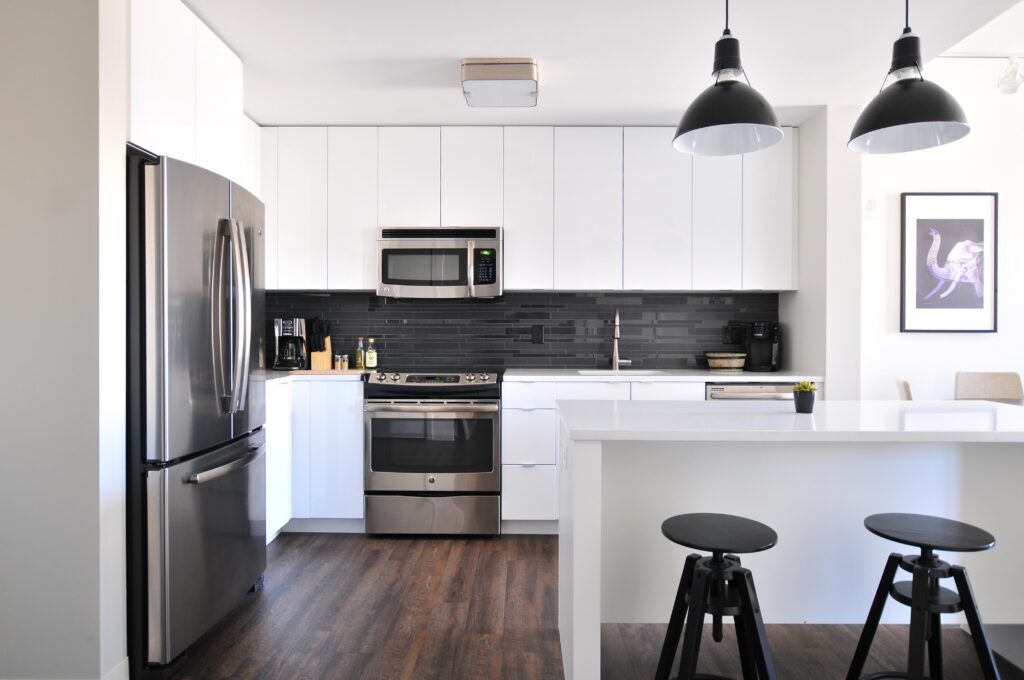In the rapidly advancing world of technology, the concept of a “smart home” has become increasingly popular among homeowners. With the ability to control various aspects of your home, such as lighting, temperature, and security, through a connected network, it’s no wonder why these devices have gained such popularity. However, as with any technological innovation, there are inherent vulnerabilities that come with integrating these devices into our daily lives. In order to ensure the safety and security of your smart home, it is crucial to be aware of the potential vulnerabilities that exist and to implement best practices for securing your home network.

Potential Vulnerabilities for Smart Home Security
1. Lack of Secure Authentication
One potential vulnerability for smart home security is the lack of secure authentication. If your smart home devices do not require strong and unique passwords, it becomes easier for hackers to gain unauthorized access to your devices and control them remotely. It is essential to set up strong and unique passwords for each device to ensure that only authorized users can access and control them.
2. Weak Network Security
Weak network security can leave your smart home devices vulnerable to cyber attacks. If your Wi-Fi network is not properly secured, hackers can gain access to your network and control your devices. It is crucial to secure your network by using strong passwords, enabling network encryption such as WPA2, and regularly updating your router’s firmware.
3. Insecure IoT Devices
Many smart home devices, also known as IoT devices, do not have sufficient security measures in place. These devices are often manufactured with weak default passwords or outdated software, making them easy targets for hackers. To secure your smart home, it is important to choose IoT devices from reputable manufacturers, ensure they have strong security features, and regularly update their firmware.
4. Insufficient Data Encryption
Data encryption is crucial for protecting sensitive information transmitted between your smart home devices and the cloud. Without proper encryption, hackers can intercept and access your data, compromising your privacy and security. It is essential to choose smart home devices that support strong encryption protocols and enable encryption for data transmissions.
5. Vulnerable Mobile Apps
Smart home devices often rely on mobile apps for control and management. However, if these apps are not secure, they can become a point of vulnerability. Hackers can exploit weaknesses in the app’s security to gain unauthorized access to your devices or steal your personal information. To mitigate this risk, it is important to only use trusted and reputable apps, regularly update them, and be cautious of granting excessive permissions.
6. Physical Security Risks
While the focus on smart home security is often on cyber threats, physical security risks should not be overlooked. If an unauthorized individual gains physical access to your smart home devices, they can tamper with or steal them. It is crucial to secure your home physically by installing adequate locks, alarms, and surveillance systems to deter intruders and protect your smart home devices.
7. Lack of Firmware Updates
Firmware updates are essential for smart home devices as they often include security patches and fixes for vulnerabilities. However, many users neglect to update their device’s firmware regularly, leaving them exposed to known security vulnerabilities. To ensure the security of your smart home devices, it is crucial to regularly check for firmware updates and apply them promptly.
8. Inadequate Router Settings
Router settings play a vital role in securing your smart home devices. If your router’s settings are not properly configured, it can expose your devices to potential threats. It is important to change the default username and password of your router, enable network encryption, disable remote management, and regularly update the router’s firmware to enhance its security.
9. Social Engineering Attacks
One often overlooked vulnerability is the human factor. Hackers may attempt to manipulate you through social engineering techniques to gain access to your smart home devices. They may impersonate technical support or use other deceptive tactics to trick you into revealing sensitive information or granting them remote access. It is essential to be cautious of unsolicited communications, verify the identity of individuals before providing information, and be aware of common social engineering tactics.
10. Privacy Concerns
Smart home devices often collect and transmit personal data, raising concerns about privacy. If this data falls into the wrong hands, it can be exploited for malicious purposes. It is important to carefully review the privacy policies and data collection practices of smart home devices before purchasing them. Additionally, regularly review and adjust the privacy settings of your devices to minimize the amount of data collected and shared.
Best Practices for Securing Smart Home Security
1. Use Strong and Unique Passwords
When setting up your smart home devices, ensure that you use strong and unique passwords for each device. Avoid using common passwords or easily guessable combinations. Consider using a password manager to help generate and manage complex passwords.
2. Implement Two-Factor Authentication
Enable two-factor authentication for your smart home devices whenever possible. This adds an extra layer of security by requiring a second form of verification, such as a text message code or fingerprint scan, in addition to the password.
3. Secure your Network
Protect your home Wi-Fi network by setting up a strong password and enabling WPA2 or WPA3 encryption. Regularly check for firmware updates for your router and apply them promptly to ensure that any security vulnerabilities are addressed.
4. Regularly Update Firmware
Keep your smart home devices up to date by regularly checking for firmware updates and applying them promptly. These updates often include important security patches that can protect your devices from new vulnerabilities.
5. Choose Secure IoT Devices
Before purchasing smart home devices, do thorough research to ensure that they have strong security features in place. Stick to reputable brands and manufacturers who prioritize security and provide regular firmware updates.
6. Employ Data Encryption
Enable encryption for data transmissions between your smart home devices and the cloud. This ensures that sensitive information such as personal or financial data is protected from interception.
7. Secure Mobile Apps
Only download and use mobile apps for managing your smart home devices from trusted sources such as official app stores. Regularly update these apps to ensure that any security vulnerabilities are patched.
8. Protect Physical Access to Devices
Secure your home physically to prevent unauthorized individuals from tampering with or stealing your smart home devices. Install high-quality locks, alarms, and surveillance systems to deter intruders.
9. Configure Router Settings
Take the time to properly configure your router settings to enhance its security. Change the default username and password, disable remote management, and enable any available security features such as firewall protection.
10. Educate Yourself About Social Engineering
Familiarize yourself with common social engineering tactics and be cautious of unsolicited communications. Be wary of sharing sensitive information or granting remote access to individuals unless their identity and intentions are verified.
By following these best practices, you can significantly enhance the security of your smart home and minimize the potential vulnerabilities. Regularly review and update your security measures as new threats emerge to ensure the ongoing protection of your smart home devices and your privacy.











